#the somewhat incredible jackie-boy man spoilers
Text




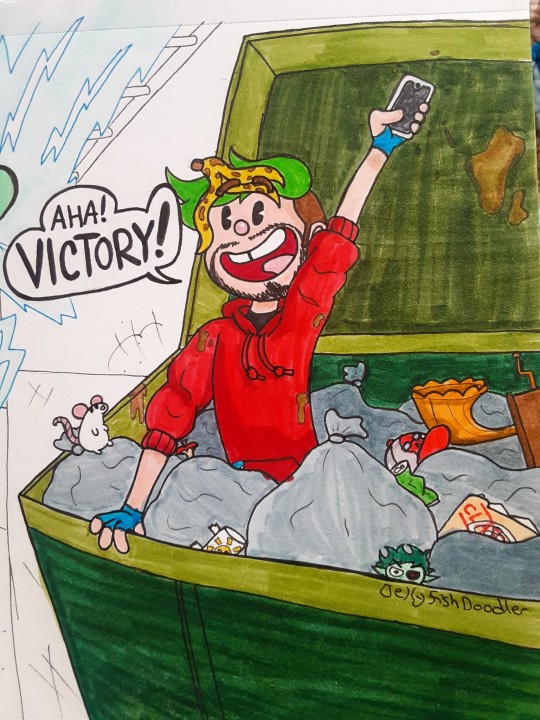
ALTRVERSE Panel Redraws!
Kinda neglected Marvin for his week of the SepticArtParty so have a 2 for 1 of the comic lads!
My markers would have perished if I colored the background forgive me
#my art#altrverse#jacksepticeye#septicart#septicartparty#marvin the magnificent#void silver#jackieboy man#the somewhat incredible jackie-boy man#void silver spoilers#the somewhat incredible jackie-boy man spoilers
258 notes
·
View notes
Text
The Unreliable Narrators of
The Somewhat Incredible Jackie-Boy Man & Void Silver
And their capacity to deceive us in the future.
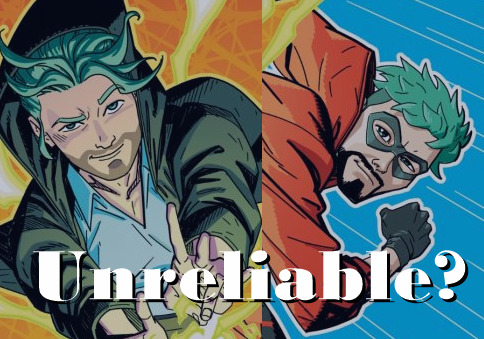
Dramatic Youtube Thumbnail lol
Major #0 spoilers
Gotta say, I really love when a story comes with a sister story with it, this being the two Altrverse comics. As I personally love having two texts to compare and contrast, as it can really help highlight what they share, what's different, and what's missing.
And wow there is some things in each story that look a lot more suspicious due to their sister text existing.
While Sister Stories do many things, in this case it highlights the unreliable narrators of each text. I hope after this look into these aspect, and if these aspects continue into the next comics, will implore you to keep an eyebrow raise in regards to Marvin and Jackie.
But first, what is an unreliable narrator? At the most basic, an unreliable narrator is a storyteller whose perspective isn't totally reliable if we want to get the full picture. They can be intentional, unintentional, aim to wrongfully mislead or give a happier story. But even unreliable narrators with good intention still can alter the story to its viewers in a way that will lead us to the wrong conclusions.
Now do I think the Volume #0 are unreliable? Not really, but it had the capacity to be, which means in future comics, they may become more and more unreliable.
I will explore how each comic is unreliable by the perspective of each story and what we are shown (or more importantly not shown).
First we'll start with
Perspective: Who is their story being told by?
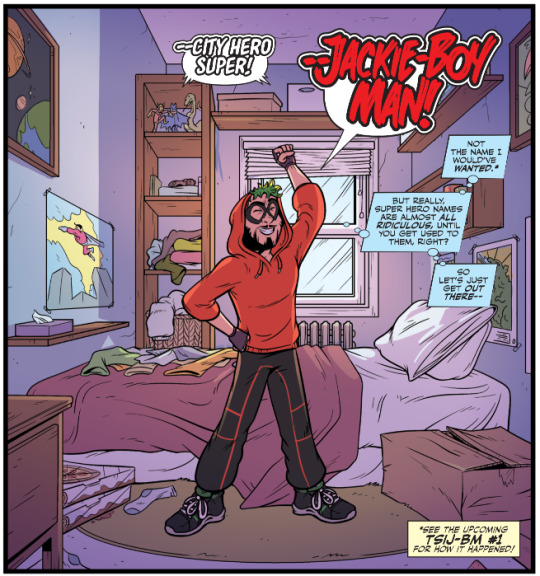
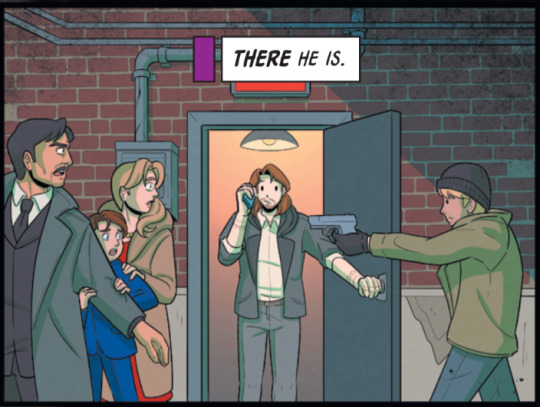
From the first page of The Somewhat Incredible Jackie-Boy Man, and by the second page of Void Silver, it is already establish that these narratives will be unreliable.
First we have Jackie. Who straight out of the gate acknowledges the viewer.
SO LET'S JUST GET OUT THERE--
And continues to narrate the rest of his story.
Now this probably doesn't seem important at first, don't a lot of comics do that? Spiderman does it! Which TSIJBM draws inspiration from. But remember what I said about Sister Stories? While this doesn't seem strange when by itself, it's strange when you look at VS.
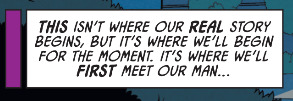



Unlike TSIJBM, who has Jackie address the viewer, we instead have a completely different character, Higgins the Cat, introduce Marvin to us. And boy does Higgins know we're watching.
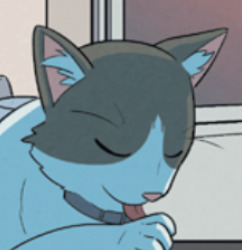

So while in TSIJBM, Jackie introduces himself to us, in VS, Higgins introduced Marvin to us.
Giving us two different protagonists, Jackie, who knows he's telling a story, and in the role of storyteller, and Marvin, unaware his story is being told and the role of storyteller belongs to Higgins.
This shows that these stories have unreliable narrators.
Shown: What do we get see?
This is also evident in the structure of the comics.
In TSIJBM, the entire story we are following Jackie, as we get his input and thoughts. The only exception being the first couple pages and the final couple panels. This also limits what we see of Jackie. As we only see what he sees/cares about, having an entire page dedicated to his thought process, because he decided that to be of most important than what else is going on around him. His story is heavily skewed by his perspective of things. Which seems to be a theme in TSIJBM, as he mistakes CyberMass' demo to be a Robot Apocalypse. We even have a minor time skip in the comic with a flashback, as we see why JBM was late to an order, but this flashback is used to bring out sympathy. It's why we only see him come out of the dumpster, not into it, it's what is more important to recall to him.


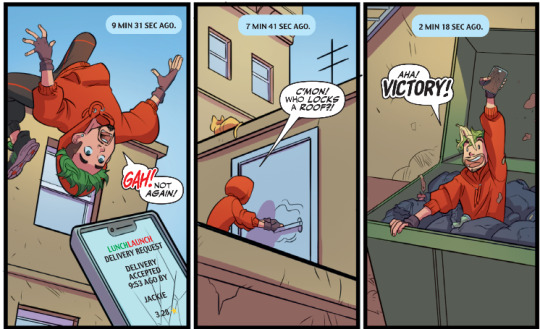
This is oppose to VS, where we don't follow Marvin the entire time, he's not even in his first page. And have an entire section dedicated to the Twins. You could say it's still Marvin's perspective because he learns of what the Twins do, but we don't learn it at the same time as Marvin. We see what happens and he learns afterwards. If we saw him go home, pick up the mask, and then see what the twins did, that would be more accurate to Marvin's experience. But Marvin, while the protagonist of his comic, is not the narrator, which belongs to Higgins. And so we see in the order of how Higgins wants us to see.


Higgins controls the perspective in Marvin's narrative. Jackie controls his own.
This means Jackie has the capacity to deceive the viewer in TSIJBM. Will he? Well we don't know him well enough in this version to know for sure. But we need to know he does have that card at his disposal.
But Higgins has the capacity to decisive the viewer in VS, and a part of me feels like he wouldn't be above that. What is especially interesting though is that it makes Marvin's story appear a lot more authentic, due to his lack of knowledge of his story being told, as we need to worry more of what Higgins shows us of Marvin.
All of this shows how Jackie is the narrator of his story, whilst Higgins is the narrator of Marvin's, both storytellers having the ability to mislead us in the future. We've already touch on a bit about what is shown in each narrative due to their narrators. But Great Sister stories highlight what they don't show.
Shown: Marvin doesn't think

There is almost 0 thought bubbles in VS. I implore you to look yourself. The only thing resembling a thought bubble is Marvin recalling what was mention in the previous pages and the statement that "Everything this masks sees, it records", which doesn't seem to be his own thoughts but just recalling statements said to him.
There are pages in VS, where if Jackie was in the situation, would be scattered with thought bubbles, like the two pages of Jackie moving while he comments on social aspects that dehumanises people. But there is none in VS. This makes sense of course, Higgins is the narrator, not Marvin, why would Higgins know what Marvin is thinking? He at best can show us what he's doing, or doesn't want us to know what Marvin's thinking.
This does highlight that Jackie is his own narrator with the lack of though bubbles in VS, if thought bubbles are a tool only for the storyteller. I mean look at these pages and tell me it wouldn't have thought bubbles if Marvin was the narrator.
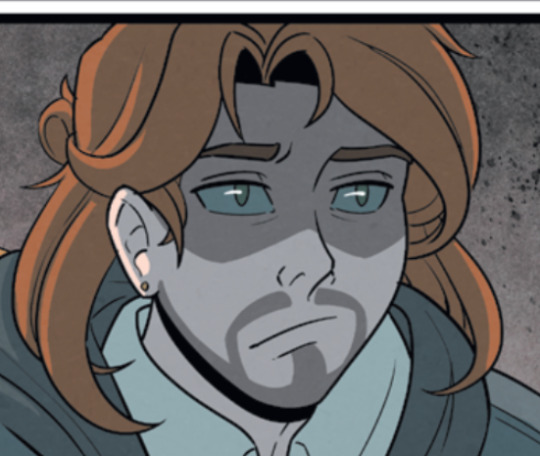
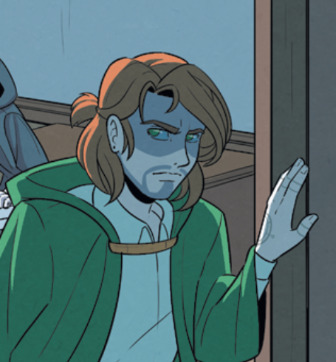
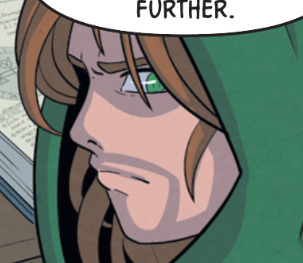
If this was in TSIJBM, we would probably see Marvin's thoughts of frustration, not just his face.
This page especially.

We didn't know why Marvin recognised the insignia until later, when Higgins showed us a flashback. Because we don't know Marvin's thoughts.
So while Marvin is more authentic than JBM, he's more secretive, not of his own volition, but because he's not his own narrator.
While they aren't both unreliable narrators, since Marvin isn't his own, they are both unreliable protagonist. One which can alter his own story, the other which has his thoughts concealed.
Similar to how there is a theme for Jackie of his perspective being skewed to what he deems reality is, there is a theme of Marvin just not knowing what's actually happening, having to rely on others to inform him (Sunday, his mask, Ramesses). Marvin is a lot less aware that he's in a story and his role in his own story.
The viewer can only trust what Jackie decided is more important for us, and the viewer has to be informed by Higgins what is important for us. This makes both comics of TSIJBM and VS have unreliable narrators, and that we should be careful at taking everything at face value in the future.
I have no clue if these aspect will continue in #1, perhaps these things only a apply to #0. But is they do continue in the next comics, I hope this has help you approach the next comic with more suspicion.
Thanks for reading. And remember that you can't always trust what is shown.


#jacksepticeye#altrverse#altrverse spoilers#the somewhat incredible jackie-boy man#void silver#jackieboy man#marvin the magnificent#tell me if i missed something
35 notes
·
View notes
Text
Psycho Analysis: Freddy Krueger (2010 remake)

(WARNING! This analysis contains SPOILERS!)
Remakes hardly ever fare well, especially not remakes of horror films. Part of the problem is that constant attempts to modernize and redo horror films of old merely leads to retreading what we once found scary with less innovation and thought put into it. Arguably, the remake of A Nightmare on Elm Street falls prey to this, but it does have some redemptive value to it… namely in its completely and utterly terrifying portrayal of Freddy Krueger.
Actor: Jackie Earle Haley may be one of the single most terrifying actors on the planet, and I love him for it. That nightmarish, gravelly voice of his is just perfect for playing sinister villains, and it really suits the more monstrous, predatory Freddy he plays here well. If nothing else, his performance will certainly make you consider bringing your brown pants.
Motivation/Goals: This Freddy is a vengeful child molester, picking off the children who snitched on him for raping them. Nancy, our protagonist, was his favorite while alive, and boy does he make it clear she’s still his favorite. In a lot of ways, this is far more disturbing and even realistic than the original child killer Freddy, though I’m not sure that this better. The pedophilia angle was always a disturbing subtext of the original, something you could pick up on or choose to ignore. Here, though, it’s in your face and unavoidable, and I think it makes things a lot more uncomfortable, for better and for worse.
Personality: This Freddy takes things back to basics: he is not the cackling, murderous goofball he became on the later installments of the Englund franchise, instead returning to the terrifying murderer with a sick sense of humor he was in the original film. He does lack a bit of subtlety and depth compared to Englund’s performance, but he makes up for it by being utterly terrifying.
Final Fate: As was the case in the original, Freddy was defeated… or is he? He jumps out for one last really lame scare at the last second, casting ambiguity on the ending of the film and making you wonder if he was actually beaten or if it was all just a dream. Sadly, we’re not likely to get any sort of followup like we did with the original film.
Best Scene: The scene where we get to see Freddy burned alive in a flashback, because it is utterly horrifying and because Haley is really going full throttle with his performance. It’s a scene that almost makes you wonder if Freddy was innocent, which the movie does offer up for a while… too bad they squander that interesting concept. Ah well, still a great scene.
Best Quote: During the scene where Freddy makes Nancy fall into a hallway of blood, he quips: "How's this for a wet dream?" While I prefer his scarier quotes, I kind of enjoy they still managed to get this Freddy to say a quip worthy of Englund’s Freddy at his corniest. It shows they weren’t totally trying to stray away from the roots of the franchise even as they ramped up the darkness.
Final Thoughts & Score: Haley’s Freddy is a great villain in need of a better film. Most of the failings I can attribute to Freddy are a result of the script being more concerned with retreading old ideas than trying to make this new Freddy genuinely interesting in his own right compared to the original. This film could have played up the angle that perhaps this Freddy was actually innocent and was the victim of vigilante justice, and was now punishing those who mistakenly punished him from beyond the grave… and in fact, for a little while, they actually do play this up! But it’s quickly tossed aside and yes, he’s a pedophile, as the original was hinted to be but never outright stated. It’s a bit blunt and kind of removes any ambiguity the plot could have had, and it really is a sad what could have been; they were on to something here that could have made this a truly incredible reinterpretation.
Still, it’s hard to be too mad at what could have been when they actually managed to do one major thing right: they made Freddy scary again. As good as Englund was, by his final movie in the original Elm Street canon that wasn’t his crossover throwdown with Jason he was basically a cackling clown of a man, a regular joker. This movie makes Freddy an undeniably terrifying force of evil yet again, keeping him in the shadows and dialing the humor way back.
Ultimately, Jackie Earle Haley was always going to be in Robert Englund’s shadow, but I still think he deserves a solid 6/10. He really took the role seriously and managed to inject the horror back into one of the most iconic slashers of all time, and while he didn’t exactly make the movie rise above anything more than being a somewhat superfluous but mostly okay film, he was almost certainly the best part about it. I just wish the writing backed up his performance more instead of his performance managing to be good despite some really weak writing.
At any rate, this was one hell of an audition for Ruvik.
28 notes
·
View notes
Link
https://ift.tt/3yIWIFS #


Warning: This article contains SPOILERS for Shang-Chi and the Legend of the Ten Rings.
Marvel’s latest, Shang-Chi & the Legend of the Ten Rings, has dozens of MCU Easter eggs hidden throughout; here they are broken down. Created as the “Master of Kung Fu,” Shang-Chi is a somewhat unusual character in the Marvel Universe in that he traditionally doesn’t possess any superpowers at all. Rather, he’s simply a martial artist so skilled he can go toe-to-toe with gods and monsters. The MCU’s Shang-Chi is very different from the comics, where he’s not connected to the Mandarin at all, but rather to another crime lord, Fu Manchu, who Marvel don’t have the rights to – and probably wouldn’t use if they could, because he’s a problematic racist trope.
Marvel has toyed with introducing Shang-Chi to the big screen for over 20 years. He was one of the 10 properties Marvel originally planned to build the MCU upon, although he was dropped when the studio reacquired the film rights to Iron Man and headed in a very different direction. Still, for all that’s the case, there’s a sense in which Shang-Chi answers mysteries that have been there in the MCU from the beginning; it reveals the truth about the Ten Rings, a terrorist organization from the Iron Man films, and even features the real Mandarin after the fake version in Iron Man 3.
Related: Shang-Chi 2 News & Updates: Everything We Know
Like all MCU films, Shang-Chi is packed with Easter eggs and cameos. Some of them are easy to spot, others are a lot more subtle – here’s every Marvel Easter egg and notable pop culture reference in the movie.

Let’s start with one of the more amusing, tongue-in-cheek nods – in one scene Katy remembers her first meeting with Shang-Chi, when he expressed a vocal objection to being considered a Korean. This is a nod to Kim’s Convenience, where Simu Liu played a Korean character named Jung. Liu has suggested this was something of a challenge; as he observed on Twitter back in 2016, “everyone is Korean except for me, and I’m trying very hard to fit in.“

Avengers: Infinity War and Avengers: Endgame were the two most spectacular events in the MCU; in the first film, the Mad Titan Thanos snapped his fingers and erased half the lives in the universe, and in the second, the Avengers brought everyone back. The five-year period between these two events has been dubbed “the Blip” in the MCU, and the Marvel Disney+ TV series have been exploring the chaos of the aftermath, with WandaVision focusing on the personal cost and The Falcon & the Winter Soldier on the geopolitical issues arising from the Blip. The Blip is referenced twice in Shang-Chi, once when Katy points out they live in a world where half the people on Earth can disappear. It’s referenced again more subtly on a poster outside her home. “Post-Blip anxiety? You are not alone,” the poster declares, suggesting there’s understandably still a lot of trauma in the world.
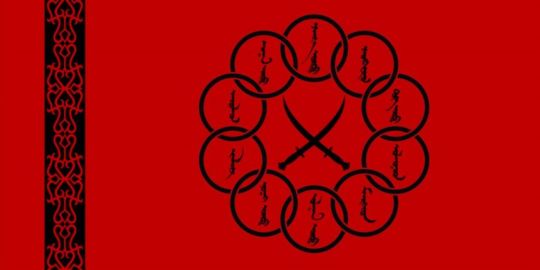
The Ten Rings have been an established part of the MCU from the beginning, as the terrorist cell that captured Tony Stark in Iron Man was one of them. They were fleshed out as the trilogy continued, appearing numerous times in tie-ins such as the Iron Man 3 Prelude comic book that revealed War Machine was dealing with a particularly nasty terrorist plot on the other side of the world when the Chitauri invaded New York in The Avengers in 2012, explaining why he didn’t help out. They were subverted in Iron Man 3, but Shang-Chi serves as something of a course-correction on that, playing them straight and liberally using the logo.
Related: Shang-Chi Cast & Character Guide: All New & Returning MCU Actors
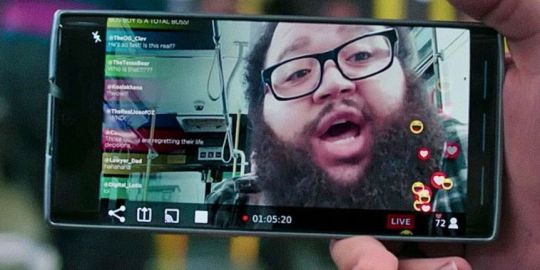
The Ten Rings catch up with Shang-Chi on the bus, and their initial confrontation is observed by a familiar face. Played by Zach Cherry in Shang-Chi‘s cameo, the vlogger Klev first appeared in Spider-Man: Homecoming, when he asked Spider-Man to perform stunts as he filmed them, and he returns in Shang-Chi when a fight breaks out on his bus. “Yo, whaddup y’all, it’s your boy Klev, coming at you live on the bus,” he declares, before stating his intention to rate Shang-Chi’s martial arts as he apparently practiced when he was younger. It’s really something of a shame Klev doesn’t appear more, because he gets some great comedic lines in this welcome cameo.
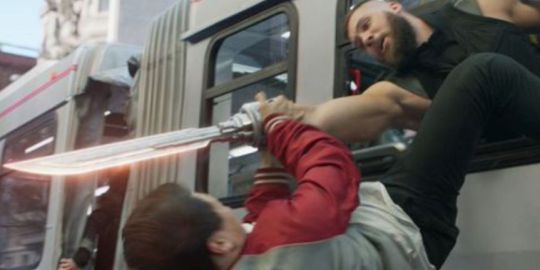
In the comics, Razor Fist is a low-level thug who typically works for more prominent villains – including the likes of the Mandarin and the Hood. He’s gone head-to-head with a wide range of superheroes, such as Shang-Chi, Wolverine, and Deadpool, but – although he was initially treated as a dangerous threat – he’s increasingly been seen as light comic relief compared to more deadly foes. Shang-Chi‘s version is a little different, with only one of his hands replaced by a razor-stump, which is frankly a lot more practical; the comic book character has often been mocked with questions about just how he gets dressed when both his hands are blades. Amusingly, it’s soon clear the character still likes to call himself “Razor Fist,” with that name sprayed on his car.
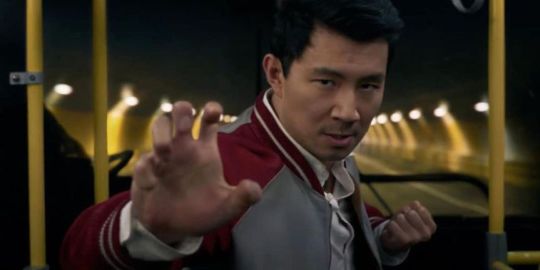
Shang-Chi is heavily inspired by Jackie Chan and Chinese wuxia films, and it wears its love of these martial movies on its sleeve – literally. The opening bus fight between Shang-Chi and members of the Ten Rings features a tremendous moment in which the hero uses his jacket as a weapon, a move that will be familiar to any Jackie Chan fans. All in all, Shang-Chi boasts some of the best fight choreography in the entire MCU to date, appropriate for the character who – in the comics – is called the Master of Kung Fu.

Shang-Chi’s origin story has completely changed from the comics, but certain elements of it still link to his first appearance in Special Marvel Edition #15. There, he was brought up by the crime lord Fu Manchu as an assassin but believing his father to be a humanitarian who only killed evil people. He did indeed complete his first mission for his father – before being told the truth about Fu Manchu being evil, and going rogue. The similarities end there, though, because Shang-Chi’s first mission in the MCU was a lot more personal.
Related: Shang-Chi Ending Explained: 6 Biggest Questions, Answered
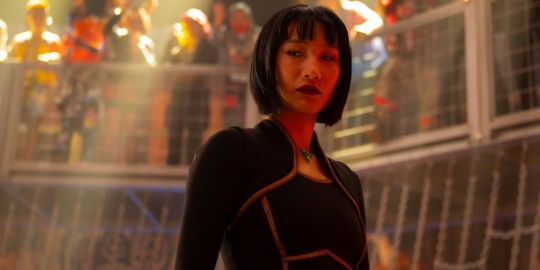
Shang-Chi seeks out his sister Xialing at the Golden Daggers Club in Macau, unaware it is a superhuman fight club or that Xialing owns it. In the comics, the Golden Daggers were a criminal organization led by Shang-Chi’s sister (named Leiko in the comics), who established them as a rival empire to her father’s. Shang-Chi originally thought they were working for Fu Manchu, but gradually learned he was caught between two rival criminal gangs.

Keep a close eye on the Golden Daggers fight club, because it includes a number of cool Easter eggs. One particularly interesting fight is between an Extremis-powered soldier from Iron Man 3 and a Black Widow, giving a sense of the superhuman scraps that take place there. The Black Widow is a character named Helen, played by stunt performer (and World Wushu Champion) Jade Xu, and it seems she has found her way to Macau after being freed from the Red Room’s control in Black Widow. The Extremis soldier is particularly curious, as they were all supposedly killed, so it’s possible someone has begun experimenting with Extremis again.
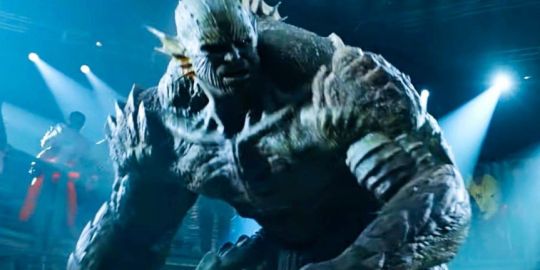
Of course, the star attraction of the Golden Daggers is the Abomination, a classic Hulk villain who’s changed substantially since The Incredible Hulk. Tim Roth’s Emil Blonsky was exposed to Gamma radiation in The Incredible Hulk, transforming him into a monster who rampaged through Harlem, but according to the Marvel One-Shot The Consultant he was viewed as a hero by the military, with the World Security Council even wanting him to get involved with the Avengers Initiative. SHIELD knew better, and manipulated events so as to ensure the Abomination was dropped from their potential Avengers roster, and (with the exception of one episode of Agents of SHIELD), he hasn’t been seen or referenced since – until now. The Abomination now sports a much more comic-book-accurate appearance, clearly having mutated significantly over the last decade. It’s difficult to say for certain, but when he is teleported away he appears to be going to the Raft, a prison for superhumans introduced in Captain America: Civil War. Blonsky will return in the She-Hulk Disney+ TV series.
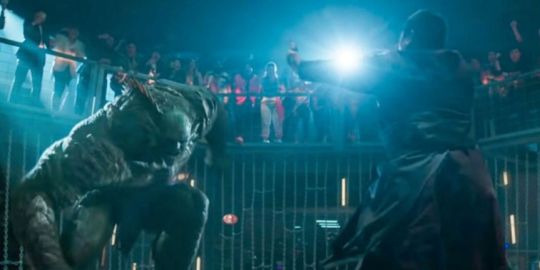
The Abomination’s opponent in the Golden Daggers is Wong, one of the more prominent members of the Masters of the Mystic Arts. It’s unclear why Wong is at a fight club, but he appears to be a regular and has a friendly relationship with the Abomination. Wong is playing a major role in Phase 4, likely because he’s operating from Kamar-Taj, meaning he’s responsible for overseeing mystical events across the entire world – while Doctor Strange appears to have become the guardian of the Sanctum Sanctorum in New York, thus being geographically limited. Wong returns in a delightful cameo in Shang-Chi‘s mid-credits scene.
Related: Shang-Chi End-Credits Scenes Set Up 6 MCU Movies & Shows
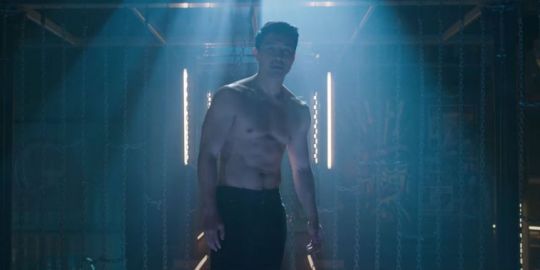
It’s easy to miss, but the Madripoor flag is painted on the walls in Xialing’s fight club. In the comics, Madripoor is basically the Mos Eisley Cantina of the Marvel Universe, a notoriously corrupt and crime-ridden island nation. It made its MCU debut in The Falcon & the Winter Soldier when the titular heroes traveled to Madripoor and learned Sokovia Accord fugitive Sharon Carter had made her home there. Interestingly, Marvel set up a promotional Welcome to Madripoor website that did initially feature Ten Rings Easter eggs; they were swiftly removed.

In the comics, Li Ching-Lin was an MI6 agent who secretly worked for Shang-Chi’s father, Fu Manchu. A skilled and brutal warrior, he was anointed Death-Dealer by Fu Manchu and became one of his most prominent henchmen, clashing with Shang-Chi on countless occasions. The MCU has completely reinvented Death-Dealer, who is apparently a key member of the Ten Rings, responsible for training them. He was a harsh mentor to Shang-Chi but did not train his sister Xialing, as she was a girl and women were not allowed to be members of the Ten Rings.

A captured Shang-Chi and his friends are taken to Wenwu’s fortress in China’s mountainous Hunan province. This is based on Fu Manchu’s home in Special Marvel Edition #15, which was indeed situated in Hunan, and it has returned in recent Shang-Chi comics. Recent Marvel comics have rewritten Shang-Chi’s history, naming this as the House of the Deadly Hand, but these retcons were carried out while the film was in production so are unlikely to be important at this stage.
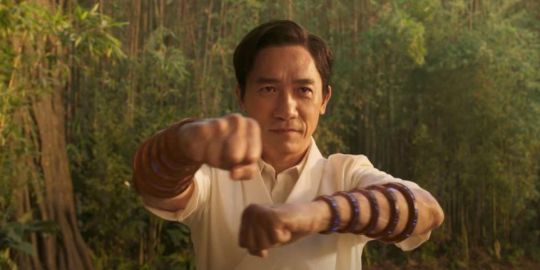
Shang-Chi introduces viewers to Wenwu, the true leader of the Ten Rings, whose identity was appropriated by actor Trevor Slattery in Iron Man 3 when he dreamed up the character of the Mandarin. Slattery’s Mandarin was a composite of a hundred legends, but Wenwu is the real deal, a complex figure who has been tortured by grief over the loss of his wife years ago. The film spends a surprising amount of time explaining the Mandarin twist, with Wenwu even discussing it at length, mocking the citizens of the United States for being so terrified of “the Mandarin” – amused so many people were afraid of him.
Related: Shang-Chi Confirms The MCU Timeline Is Completely Broken Post-Endgame

According to Wenwu, he has been known by many names over the millennia; the Warrior King, Master Khan, and the Most Dangerous Man on Earth. The second of these titles is the most important, because in the comics “Master Khan” is indeed an alias of the Mandarin. In the comics, it denoted a connection between the Mandarin and Genghis Khan, but in the MCU the timeline may instead hint Genghis Khan was himself Wenwu.
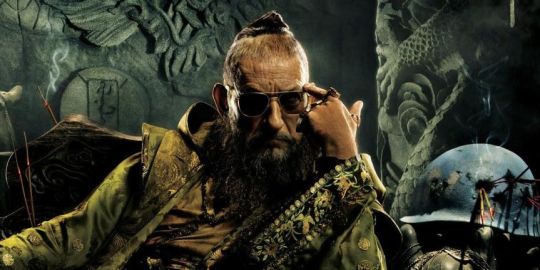
Down-on-his-luck actor Trevor Slattery returns from Iron Man 3, once again played by Ben Kingsley. As seen in the Marvel One-Shot All Hail the King, Slattery was broken out of prison by the Ten Rings, with Wenwu intending to kill him for the audacity of appropriating his identity in this way. Slattery apparently forestalled the execution by launching into a terrified performance of Macbeth, and was thus spared death, instead becoming Wenwu’s jester. Trevor plays a surprisingly important role in Shang-Chi, helping the heroes get to the mystical realm of Ta Lo before Wenwu, and he even survives the battle with the Dweller-In-Darkness in hilarious fashion.

Ta Lo exists in the comics, where it is a small pocket dimension numbered among the so-called “God Realms.” This is a seriously deep cut into Marvel lore, with Ta Lo only appearing in a single issue – Thor #301 – and actually explored more in Marvel handbooks than in the comics themselves. According to these handbooks, there are five interdimensional nexuses that lead to Ta Lo, each found at the foot of a sacred mountain. It is home to the Xian, a race akin to the Asgardians who have inspired China’s Taoist gods; Shang-Chi wisely ditches this idea, aware it would be culturally insensitive.
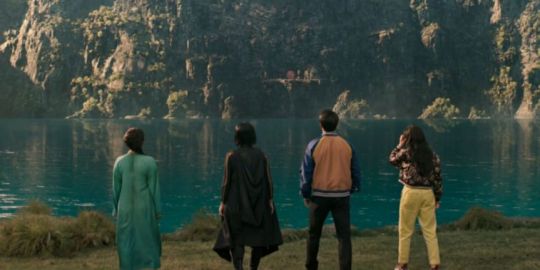
As noted by Mateo, Wenwu claims the gate to Ta Lo opens only on Qingming Jie, allowing viewers to precisely date Shang-Chi in the MCU timeline. Because this happens after Avengers: Endgame, Shang-Chi must be in 2024, and this Chinese festival day will happen on April 4 that year. The events probably take place from approx. March 29 through to April 5, which means the timeline for MCU content post-Endgame currently looks something like this:
Loki
Marvel’s What If…?
WandaVision
Shang-Chi & the Legend of the Ten Rings
The Falcon & the Winter Soldier
Spider-Man: Far From Home
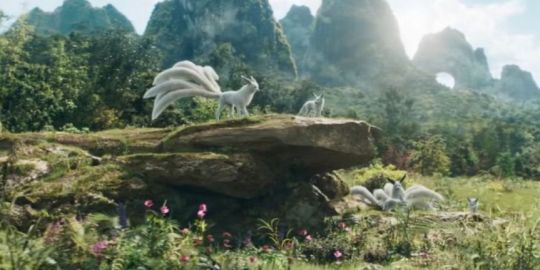
Shang-Chi features a wealth of mythical Chinese creatures, including:
The unicorn-like qílín, the horned creature with the body of a deer and the tail of an ox, which lives in places of peace and serenity and only appears in the real world to presage the emergence of a great, benevolent ruler. Ta Lo is presumably supposed to be the origin of the qílín.
There’s also a glimpse of the fènghuáng, an immortal bird sometimes incorrectly called the Chinese Phoenix, another auspicious creature. Interestingly, both the qílín and the fènghuáng are symbols of balance, incorporating both the male and female elements; balance is very much the theme of Shang-Chi, so the presence of these two mythological animals is very appropriate indeed. Both the qílín and the fènghuáng are associated with Ta Lo in the comics.
The beautiful húlijīng, a mythical nine-tailed fox that has absorbed the natural energy of the world over many years.
There are also shíshī, the Chinese guardian lions, sometimes called foo dogs, who assist the residents of Ta Lo in their battle against the Ten Rings.
The longma is a legendary winged horse with dragon scales, another creature whose presence is symbolic of the rise of a sage ruler.
The most prominent creature in Shang-Chi is Trevor Slattery’s Maurice, a dìjiāng – often seen to represent cosmic confusion. It makes sense a dijiang would associate itself with Trevor.
Related: Every Marvel Cinematic Universe Movie, Ranked Worst To Best (Including Shang-Chi)
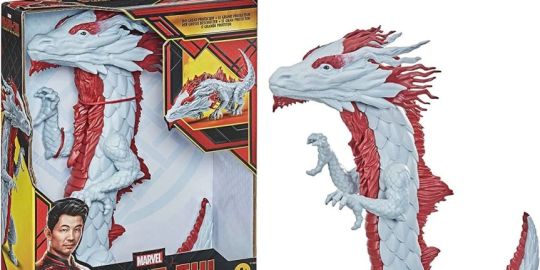
Dragons do exist in Marvel Comics, the most famous being the alien Makluan dragon creature Fin Fang Foom; however, the Great Protector seen in Shang-Chi is nothing like a Makluan. Rather, the creature is based on Chinese mythology, where dragons – or lóng – serve as protectors rather than destroyers, and the dragon has become a symbol of status and power. Shang-Chi is likely set in the year 2024, which seems amusingly appropriate, given that is the Year of the Dragon in the Chinese Zodiac.
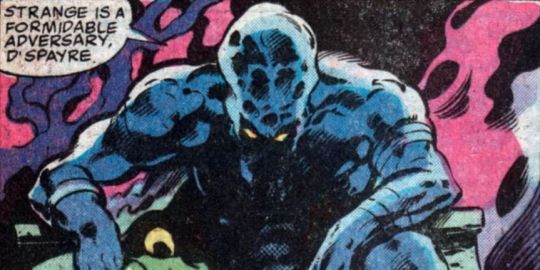
The Dweller-in-Darkness is lifted from the comics, although he’s been adapted quite significantly. In the comics, he is one of the universe’s Fear Lords, beings who gain sustenance from the fear of creatures on other planes, and he considers the more famous comic book Fear Lord, Nightmare, to be his cousin. Dweller-in-Darkness was a terrible threat to the Earth millennia ago, in the days of ancient Atlantis, and derived great pleasure from the conflict between the Eternals and the Deviants that led to the sinking of that continent. He grew too powerful, however, and caught the attention of the Atlantean sorceress Zhered-Na, who cast the Dweller-In-Darkness into an eternal slumber from which he only awoke in the modern era – only to find himself contested now by Doctor Strange. The MCU’s Dweller-in-Darkness has been changed a lot, and is now some sort of demon, blended with the Chinese myths of the Wangliang, a malevolent spirit in Chinese folklore. The Soul Eaters serving the Dweller-in-Darkness in Shang-Chi do exist in the comics, but they too have been heavily modified. In the comics, a Soul-Eater attaches itself to a victim and preys upon them for a lengthy period of time, consuming their soul little by little. The process of soul extraction is vastly accelerated in Shang-Chi.
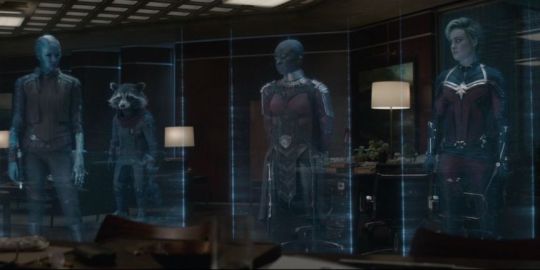
Shang-Chi‘s post-credits scene reveals the superhero holo-conferences conducted by Black Widow during the Blip (as seen in Avengers: Endgame) are still ongoing. This is the first time there’s been a hint Earth’s protectors are still organized in Phase 4, and it’s likely Wong only called in the people he wanted involved in discussions about Shang-Chi’s Ten Rings; Captain Marvel, with her knowledge of alien worlds and civilizations, and the scientific mind of Bruce Banner. Neither has ever seen anything like this before, with Banner confirming they’re not Vibranium.

Something has clearly happened to Bruce Banner between Avengers: Endgame and the events of Shang-Chi; the last time he was seen, the Banner and Hulk personas had combined into “Professor Hulk,” and he was stuck in that form permanently, but now he’s back as a human being. This will probably either be explained by the upcoming She-Hulk Disney+ TV series, or else it will be setup for it, explaining why Banner’s blood is used in a transfusion for his cousin Jennifer Walters. His right arm is still in a sling, meaning the injury he sustained when he used the Infinity Gauntlet hasn’t been healed. It seems Marvel are honoring the Russo brothers’ wishes for the Hulk to have a permanent injury; “It’s permanent damage,” Joe Russo explained in one interview. “The same way it was permanent damage with Thanos. It’s irreversible damage.“
Related: Every Upcoming Marvel Movie Release Date (2021 To 2023)

Wong references Kamar-Taj during the holo-conference, revealing the Masters of the Mystic Arts were able to detect whatever “signal” was emitted from the Ten Rings at the moment control of them passed over to Shang-Chi. This is pretty impressive, given Ta Lo was described as being in an entirely different universe, meaning the energy surge generated by them must have traveled through the entire Multiverse.

The MCU has always loved to incorporate classic music into its films, and the Eagles’ “Hotel California” crops up throughout Shang-Chi. The theme of the song works perfectly for the movie, as Shang-Chi has attempted to “check out” of the family drama, but he can never leave. The mid-credits scene of Shang-Chi and the Legend of the Ten Rings puts a more positive spin on this, though, because now Shang-Chi has checked in to the world of superheroes, and his life will never be the same again.
More: Where Was Doctor Strange During Shang-Chi?
#marvel #avengers #marvelcomics #spiderman #mcu #ironman #comics #captainamerica #thor #avengersendgame #marvelstudios #xmen #dc #marveluniverse #art #cosplay #tomholland #hulk #disney #comicbooks #dccomics #peterparker #tonystark #blackwidow #marvellegends #endgame #deadpool #marvelcinematicuniverse #loki #bhfyp
The post Every MCU Easter Egg In Shang-Chi And The Legend Of The Ten Rings appeared first on undertheinfluencerd.net.
#entertainment, screenrant #tumblr #aesthetic #like #love #tumblrgirl #follow #instagram #photography #instagood #likeforlikes #s #likes #art #cute #o #girl #followforfollowback #a #tumblrboy #grunge #fashion #photooftheday #tiktok #l #photo #sad #k #frases #f #bhfyp
0 notes
Text
My thoughts on the Broadway cast album (3) -- spoilers
This post will cover the rest of the Act One songs.
9. “What Could Possibly Go Wrong?” -- Replaces “It’s Teavee Time” from London. This switches between an “All-American school fight song”-style march for Mrs. Teavee and a electric guitar-shredding bridge for Mike. Although it’s suggested that this Mrs. Teavee is just as much of a Stepford Wife-type as her London counterpart was, to me she sounds a lot jollier, just deluded as she sings about all the great things about the U.S. of A. (medications, alcohol, guns, online message boards, etc.) and how it raises its kids (treating them like special snowflakes).
The merry melody (or looney tune, pick one) is fun enough that the lyrics sound funnier and less tired than they actually are. Again, the lyrics seem to have the wrong priorities -- where “It’s Teavee Time” focused on how Mike was almost sociopathic and certainly destructive (I’ve always seen it as a close cousin to “Dentist!” from Little Shop of Horrors), and what that meant for his mom in particular, this is just a goof on U.S. patriotism (notably malcontent and president get rhymed) aside from Mike’s stretch.
Mike’s stretch sounds a lot like something from a 1990s Chuck E. Cheese commercial, and it’s about as relevant. Rather than be obsessed with violent video games (having his favorite be called Captain Knuckleduster showed how closely the creators had read the novel), he’s a social media freak. I suppose the techno-rock that he had in the London version is already kind of dated, but given that “Vidiots” was ported over to Broadway intact, what was wrong with “It’s Teavee Time”?
If there’s one performer the reviews for this show had absolute sympathy for it was Jackie Hoffman as Mrs. Teavee. She does put her heart into it -- she reminds me of Carol Burnett in her more manic modes -- but again, acting funny and being funny are two different things.
10. “If Your Father Were Here” -- Retooled from the London version’s “If Your Mother Were Here”, this is now a solo for Mrs. Bucket. Not much is actually changed from the original, but I agree with the critics/online commenters who would rather have had “Cheer Up, Charlie” in this spot if the show was going to use songs from the ‘71 film and get rid of Mr. Bucket. Actually, he appears in a dream ballet in this sequence according to reviews, but there’s no instrumental break here; I assume they just chose to skip a dance break on this recording?
11. “I’ve Got a Golden Ticket”/”Grandpa Joe” -- "Grandpa Joe” refers to the lyrics that opened “Don’cha Pinch Me Charlie” in London and are here interpolated into one of the best songs from the ‘71 film. It’s workmanlike and small (Charlie, Grandpa Joe, and Mrs. Bucket) compared to the glorious “Don’cha Pinch Me Charlie” in London and lacks the life and relative realism of its cinematic counterpart. It feels somewhat rushed and perfunctory, just checking off more boxes.
12. “It Must Be Believed to Be Seen” -- Hoo boy. This was the song that sold me on the original London production of this show and Douglas Hodge’s performance. When I first heard it the fact that it felt both familiar and new was incredibly exciting, and Hodge put everything into his performance. He really was that electrifying live too.
Again, Christian Borle is a fine singer, maybe better than Hodge technically, but he simply isn’t in the same league of characterization as Hodge. I think how he handles the opening lines (when Mr. Wonka’s pretending to be frail) sums up everything wrong with his approach to comedy -- I could see people being fooled by Hodge’s soft, wavering voice and mannerisms, but Borle goes all in on the “old man” voice and it just becomes a cartoon. Combine his unimaginative performance with what sounds like a much smaller/weaker orchestra than the London production had -- the underpowered music is a major shortcoming of this recording throughout -- and it’s not a patch on the original.
Also, having the ensemble sing along with Borle starting with “Your life’s about to change now/So don’t get left behind” makes no sense. This is Mr. Wonka’s song; he’s being the Pied Piper and selling these unsuspecting vict- I mean guests the bill of goods; they should be just following his lead.
End of Act One.
#charlie and the chocolate factory#charlie and the chocolate factory the musical#charlie and the chocolate factor broadway#CharlieChoc#willy wonka#musical theater#musical theatre#broadway#musicals
2 notes
·
View notes
Text
Major Spoilers for The Somewhat Incredible Jackie-Boy Man #0 and the what has been revealed for #1
Theorising/thoughts about Void Silver's final page and what might happen in #1 or future
My Void Silver one is here

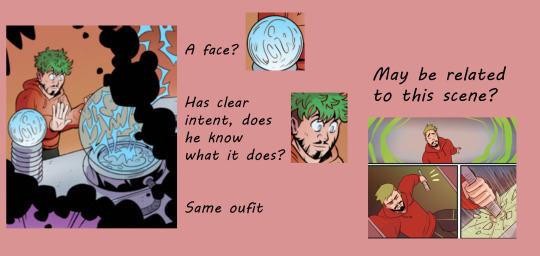
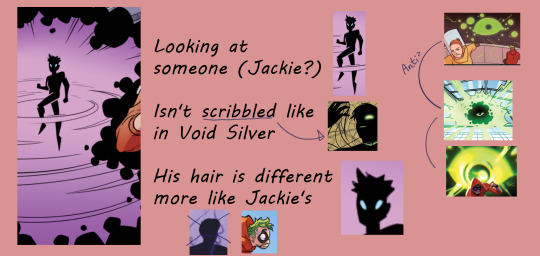


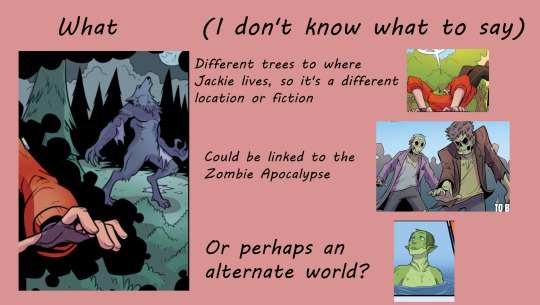
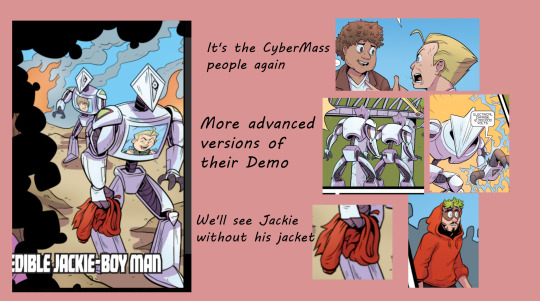
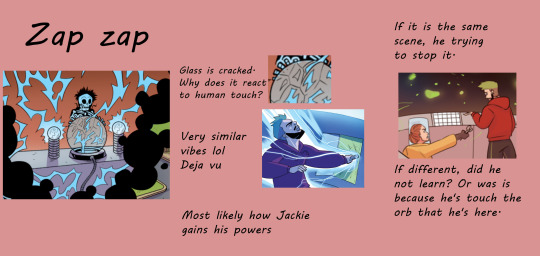
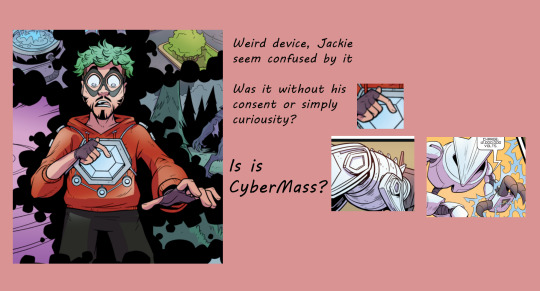
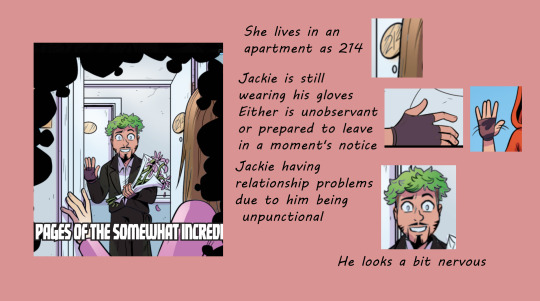
Apologies again about the quality
Very brief notes about each aspect of the final page in the Somewhat Incredible Jackie-Boy Man
#jackieboy man#jackieboyman#the somewhat incredible jackie-boy man#jacksepticeye#altrverse#altrverse spoilers#anti is here again
10 notes
·
View notes
Text
JSE Masterpost
Because suddenly I became a JSE Blog, this will be my pin for a bit, may get updated idk
General Art
Hair Day - (25/04/24)
Sketches - (27/04/24)
Literature - (27/04/24)
Vampir3bitez JJ Puppet AU - (28/04/24)
Sam 2017 - (01/05/24)
karsyntries' JBM DTIYS - (02/05/24)
Familicide - (03/05/24)
Jack (Marvin) of Cards - (04/05/24)
"A Jack" - (04/05/24)
Medicine - (07/05/24)
Altrverse Art (Contains spoilers for ALtrverse #0)
A White Cat and A Golden Bear - (26/04/24)
"Cats like these things, right?" - (26/04/24)
Phony - (27/04/24)
I want to know these fellas - (27/04/24)
"Hey" - (28/04/24)
PH!Marvin and AV!Sunday - (28/04/24)
Magnificent Marvin & Spectacular Sunday - (29/04/24)
The Fellas again with the Twins - (08/05/24)
He has your delivery - (10/05/24)
Polls
Results of Marvin's Shirt - (30/04/24)
Results of Ego Confrontation - (02/05/24)
Who do you think ALtr 5914 is? - (10/05/24)
"Analysis"
Void Silver #0 Final Page - (05/05/24)
The Somewhat Incredible Jackie-Boy Man #0 Final Page - (06/05/24)
Altrverse #0 Unreliable Narrators - (06/05/24)
Random Textposts or Edits
Trying to find the Hair Colour of the Egos and their appearances - (23/04/24)
Four Leaf Clover Marvin - (26/04/24)
JJJJ but it's Chase - (26/04/24)
Give it - (26/04/24)
Anti Vocaloid - (29/04/24)
Stacy's Sister? - (02/05/24)
2 notes
·
View notes